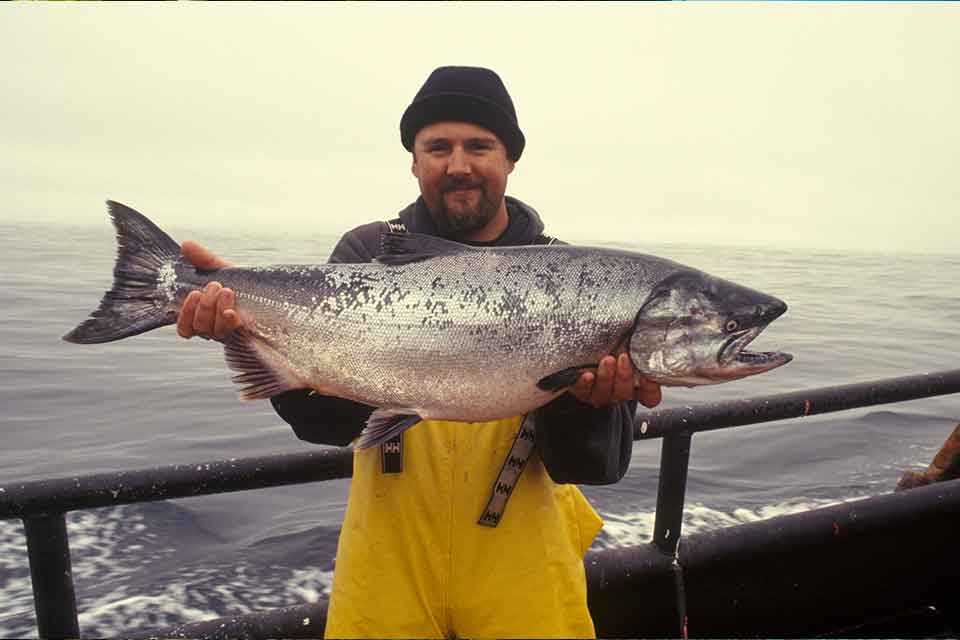Throughout the series of articles I'm putting together on customer data platforms (CDP) we're going to imagine you're running a tour company that sells global fishing tours, aiming at our friend the Ozzie fisherman! He's the man with the fish. Let's call him Todd.
So how does a CDP help you sell to Todd?
A customer data platform (CDP) is a type of software that helps your tour company centralize, integrate, and manage customer data from a variety of sources. The goal of a CDP is to create a single, comprehensive view of each customer (in this case Todd) that you can use to personalize your marketing efforts and improve his experience as a customer.
CDPs are designed to collect data from various sources, including online and offline interactions, social media, and CRM systems. Todd might have interacted with your website, answered emails, called your helplines or met your company at a tradeshow or travel event. All this data would be added either manually or automatically to the CDP. The data is then cleaned, normalized, and merged into a single customer profile about Todd, which you can use to understand what Todd wants and deliver more targeted and personalized marketing messages to him.
CDPs can be used to put Todd into different groups (segments) based on their characteristics and behaviours, and to create targeted campaigns and offers based on these segments.

4 examples of how you can use a CDP in relation to Todd
1. Personalisation and Targeting:
You start off by using the CDP to create a comprehensive view of Todd (and each customer), including their past interactions, preferences, and behaviours. For example, the CDP might show that Todd has previously purchased a deep-sea fishing tour but he's also expressed an interest in fly fishing through interactions on your website. Based on this information, you send Todd a targeted advert on Facebook for fly fishing tours, when he's travelling in a place you have those tours. You know this because you have Todd's email address which is connected to his Facebook profile and you have already fed Todd's information to your Facebook ads through the CDP. As a result, Todd sees the advert when he's in the location you sell the fly fishing tour. He's in the right place at the right time and you are offering him an offer that is relevant to him. Therefore there is a good chance you'll make the sale because you've personalised the Ad for Todd but also targeted him at the right time and place.
2. Segmentation:
The CDP is used to segment customers based on various characteristics and behaviours, such as their destination preferences, budget, and travel style. For example, you might create a segment of budget-conscious customers interested in fishing in local lakes and streams, and a separate segment of high-end customers interested in luxury fishing trips to exotic locations. Todd is one of the latter for sure, but depending on the time of the year and his location he may also be part of another segment. A month or two after he's had his fly fishing trip you might make him an offer over email. It could be a package that offers deep-sea fishing to Todd and his family 6 months into the future in Barbados. You know that Todd travels around this time of the year, you also know he is into deep-sea fishing and stays in exotic places so it's worth reaching out to him again. Similarly, you have Luigi who is one of the budget-conscious customers who rarely travels outside of Europe, usually fishing on the lower end of the scale. You might make him a completely different offer, like offshore coast fishing in Italy in the summer because that's close to what Luigi normally does.
3. Customer service and support:
The CDP provides customer service representatives with a complete view of each customer's interactions and history, making it easier to resolve issues and provide personalized support. For example, if Todd calls with a question about the Barbados fishing tour, the customer service representative can quickly access Todd's history, understand the offer made to him and provide accurate and helpful information.
4. Lead generation & Lookalike audiences:
The CDP helps you identify potential leads, classify them and tailor their marketing efforts to specific segments, increasing the chances of converting leads into customers. For example, the CDP might show that a group of potential leads (including Todd) have recently searched for information about fishing tours in the Caribbean. You can create a targeted marketing campaign for this group (see also the article on 1st party personas), offering special discounts on Caribbean fishing tours. In addition, the CDP can help you take the common interests these leads have and create lookalike audiences in tools like Facebook. For instance, based on Todd's personal profile, you could create a segment with the attributes of age 35-45, high income, travels twice per year, interested in fishing, deep-sea fishing, fly fishing, spin fishing interested in luxury high-end hotels and resorts. Using Todd's characteristics to attract similar like-minded people on Facebook when they are in the destination where you offer services gives you a chance to send an ad to them and generate a new lead or sale, further adding to the data you have in your CDP.
Summary
In my view, CDPs are an essential part of the analytics and digital marketing armoury. They are not expensive, work well with modern technology and save a ton of time learning about your customers. The best part is that they work with everything you have, like your analytics systems, your CRM, marketing channels and the data warehouses you use to store your customer data. If you want to find out more about CDPs drop me a line or fill in the details below.

